Boating Safety Guide
A fun day on the water can quickly become a nightmare when an accident occurs, resulting in fatalities or severe, life-altering injuries. Whether you’re a seasoned sailor or a first-time boater, prioritizing safety on the water is a must to ensure a trouble-free voyage. By taking the safety measures outlined in this boating safety guide, you can greatly reduce your risk of being involved in a boating accident.
Quick Links
Boating can be a rewarding pursuit, but it also comes with dangers. Fortunately, most boating accidents are preventable if you take proper safety precautions.
We believe that prevention is the best medicine against boating accidents, which is why we’ve put together this detailed boating safety guide. In this guide, we break down practical boating safety tips and essential precautions to keep your boating experience safe and enjoyable.
What Are the Main Causes of Boating Accidents?
Various factors contribute to boating accidents, and many accidents involve a combination of factors. Understanding these factors can help you mitigate risks and stay safe on the water. The main causes of boating accidents include:
- Operator inattention
- Operator inexperience
- Improper lookout
- Excessive speed
- Machinery failure
- Boating under the influence of drugs or alcohol
- Adverse weather conditions
- Hazardous waters
- Lack of proper equipment
- Improper loading or weight distribution
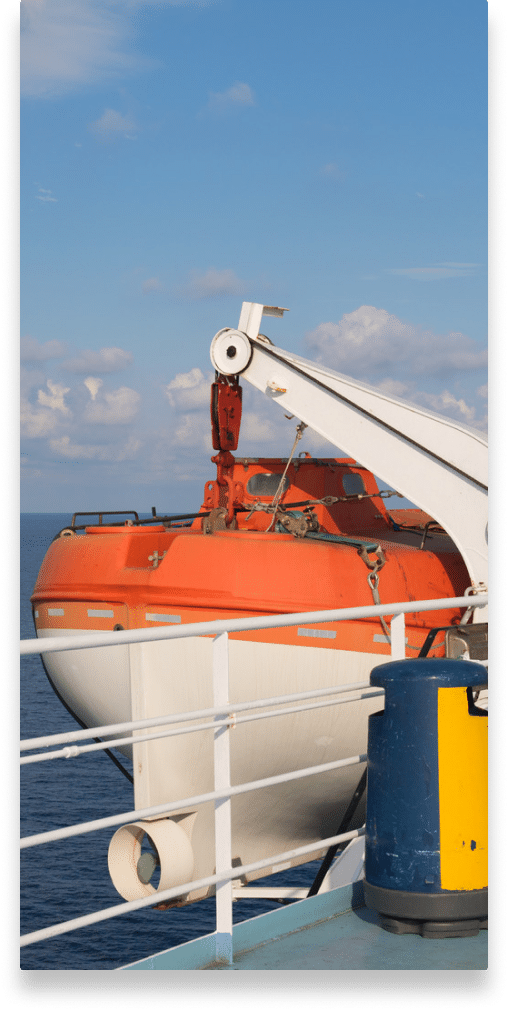
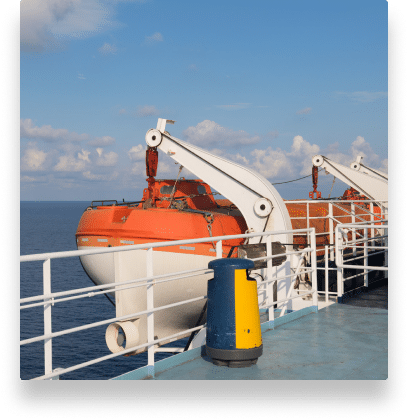
Some of these factors are more common than others, and boating under the influence stands out in particular. Approximately half of all boating accidents involve drugs or alcohol. Boating under the influence of drugs or alcohol is illegal in every U.S. state, and the Coast Guard also prohibits boating under the influence at the federal level.
How Often Do Boating Accidents Occur?
Coast Guard data shows that in 2022, there were 4,040 boating accidents nationwide. The total number of boating accidents dropped by nine percent from 2021 but remains far too high.
These accidents resulted in 2,222 non-fatal injured victims and 636 deaths—most of which were likely preventable. They also caused a total of $63 million in property damage.

Types of Boating Accidents
There are many different types of boating accidents. The most common types include:
- Boat collisions – Boat collisions involve an impact between two or more boats on the water. Potential causes include navigational errors, failure to yield, lack of proper communication, impaired visibility caused by fog or darkness, and operator inattention.
- Water intrusions – Water intrusions happen when water enters the boat, either due to waves, heavy rain, or other factors, such as improperly sealed hatches or openings, hull damage, or leaks in the boat structure. This can lead to sinking if not addressed promptly.
- Capsizing – Capsizing occurs when a boat overturns or turns on its side, leading to a potential loss of stability and sinking. This type of accident can result from overloading the boat, sudden shifts in weight distribution, rough weather conditions, large waves, or improper cargo loading. Small boats are particularly susceptible to capsizing.
- Grounding – Grounding, or “running aground,” happens when the water is no longer deep enough to keep a boat afloat and the boat makes contact with the bottom of the body of water. Moving at high speeds in unfamiliar areas, navigation errors, or lack of awareness of water depth can all increase the risk of this type of accident.
- Flooding – Flooding occurs when water accumulates inside the boat and surpasses the boat’s capacity to drain or pump it out effectively. Hull damage, leaks, or breaches in the boat’s structure can lead to flooding. A malfunctioning bilge pump or inadequate drainage systems can also cause flooding.
- Falling overboard – This involves a person unintentionally entering the water by falling off a boat. Factors contributing to falling overboard include sudden boat maneuvers, slippery surfaces, rough waters, and lack of proper safety equipment. Being under the influence of drugs or alcohol can also increase the likelihood of a person falling overboard.
Common Boating Accident Injuries
Boating accidents of all types can cause serious injuries, including the following:
- Anoxic brain injuries due to being trapped underwater
- Traumatic brain injuries
- Soft tissue injuries
- Broken bones
- Spinal cord injuries
- Whiplash
- Electrocution
- Amputation
- Lacerations
Beyond the physical injuries associated with boating accidents, victims may also experience psychological injuries that can have lasting effects on their mental well-being.
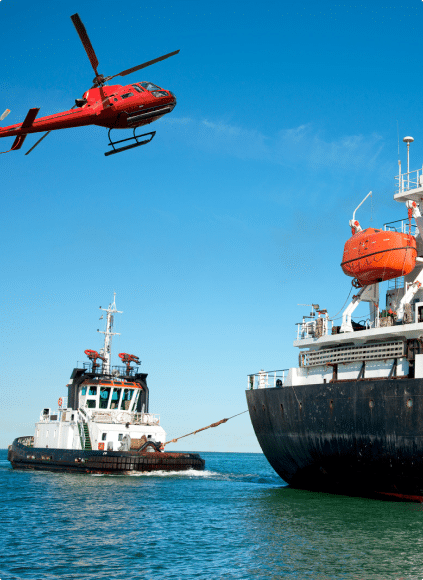
General Boating Safety Tips
Taking a few basic precautions can go a long way toward making your boating journey a safe one. Keep these general boating safety tips in mind before you head out on the water:
- Stay sober – Make sure anyone who will be operating the boat avoids consuming alcohol or using drugs. Encourage occupants to avoid excessive alcohol consumption as well.
- Be aware of your surroundings – Stay alert to your surroundings, including other boats, buoys, and obstacles. Avoid distractions while operating the boat, and keep a 360-degree awareness at all times.
- Swim safely – Make sure you and your guests only swim in designated areas and make sure the engine is turned off to prevent accidents.
- Stay hydrated – Bring an ample water supply to stay hydrated, especially on hot days, to avoid heat-related illnesses.
- Secure items onboard – Secure all loose items to prevent injuries and damage during sudden maneuvers.
- Load cargo evenly – Distribute the weight of cargo evenly throughout the boat to maintain stability and prevent capsizing.
- Take a boating safety course – Educated boaters are safer boaters. A boating safety course can equip you with the knowledge you need to avoid causing an accident or to respond appropriately if one occurs.
- Know the speed zones – Familiarize yourself with designated speed zones in the area where you’re boating and adhere to posted speed limits.
Developing a Float Plan
In addition to the above boating safety tips, it’s a good idea to develop a float plan. This is a detailed document that outlines the specifics of your boating trip and when you plan to return. You’ll want to provide this document to a trusted individual ashore and make sure they know to alert the Coast Guard and local authority if you fail to return as planned.
At a minimum, your float plan document should include a description of the boat, the destination and general route, the number of people on board, a timeframe for your outing, and your contact information. The U.S. Coast Guard has a float plan template with additional details to make it easy to create a comprehensive plan.
Getting Your Boat Checked
Many boating accidents result from existing issues with the boat’s mechanical operations or safety equipment. Getting a professional safety check ensures that any potential problems are detected and addressed before you head out on the water.
The U.S. Coast Guard Auxiliary offers free vessel safety checks that generally take no more than 30 minutes. If your boat doesn’t pass the check, the Coast Guard will not issue a citation or demerit. Instead, you’ll receive a written report detailing how to correct any issues.
These checks can offer peace of mind before your journey. Additionally, you may be eligible to receive a discount from your boating insurance agency. This can make it more affordable to get protection against potential financial losses and liability if an accident occurs.
Boating Safety Equipment Checklist
Don’t forget to pack the right safety gear for your next boating adventure. If you already have this equipment on board, inspect it regularly to make sure it remains in good shape. The following equipment is essential for boating safety:
- Life jackets – Each person on board should have a properly fitting U.S. Coast Guard-approved life jacket.
- Throwable flotation devices – Keep easily accessible throwable devices, such as lifebuoys or rings, for emergencies.
- Sound signaling devices – Have a whistle, horn, or bell to signal your presence, especially in low visibility conditions.
- Visual signaling devices – Carry visual distress signals, like pyrotechnic devices, flares, or flags, for emergency signaling.
- Cell phone and VHF radio – Bring a fully charged cell phone in a waterproof case as a backup communication device. It’s also a good idea to keep a VHF marine radio for reliable communication on the water.
- Heavy-duty flashlight – Keep a heavy-duty flashlight with spare batteries for nighttime boating or emergencies.
- Fire extinguishers – Depending on the size of your boat, you’ll need at least one B-1 type fire extinguisher onboard.
- First aid kit – Maintain a well-stocked first aid kit to address minor injuries or medical emergencies, including cuts, scrapes, and seasickness.
- Bailing device – Have a bilge pump or manual bailing device, such as a bucket, to control water that enters the boat.
- Anchor with a line – Carry a suitable anchor and enough anchor line to keep your boat in place while waiting for help to arrive in an emergency.
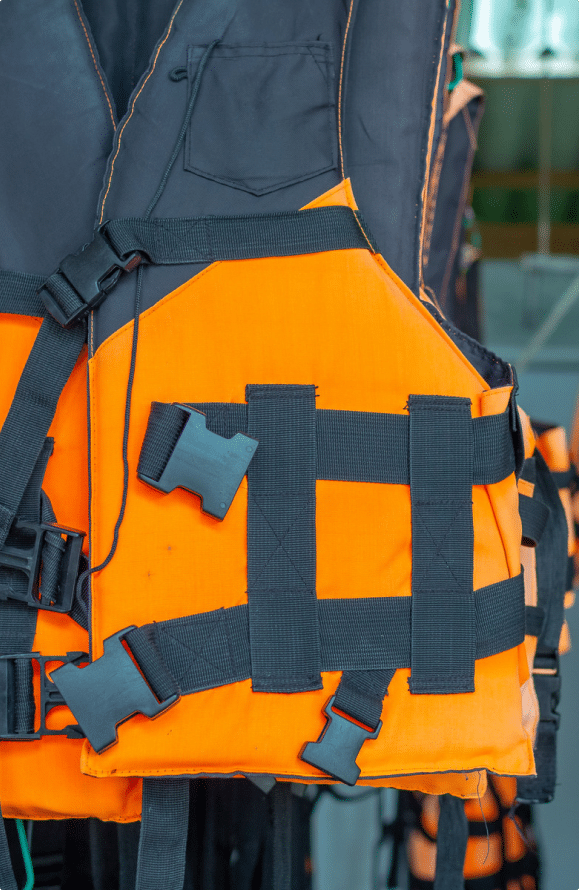
The Importance of Proper Life Jackets
Proper life jackets play a crucial role in ensuring boating safety, and wearing them can be the difference between life and death in emergencies. One of the most significant risks associated with boating is drowning, and statistics consistently show that a majority of boating-related deaths occur due to drowning incidents.
The U.S. Coast Guard has specific requirements for life jackets. Your boat will only pass the Coast Guard’s safety check if it contains a Coast Guard-approved life jacket for each person aboard. Additionally, lifejackets must be appropriately sized for the intended user, appropriate for the intended activity, and in good condition.
Weather Preparedness
Unpredictable weather conditions can pose significant safety risks while out on the water, so it pays to practice proper weather preparedness before boating.
Always check the weather forecast before heading out on the water. Pay attention to the current weather conditions as well as any forecasts for the duration of your boating trip. Keep in mind that weather can change rapidly, so it’s advisable to monitor updates regularly, especially if you plan an extended journey.
Remember, not all weather sources are created equal. You should only rely on reputable weather sources, such as the National Oceanic and Atmospheric Administration’s marine forecasts, for accurate and up-to-date information.
The U.S. Coast Guard provides its own boating safety guide to help boaters recognize signs of hazardous weather conditions. Pay attention to the following indicators:
- Flat clouds getting lower and thicker
- Puffy, vertically rising clouds getting higher
- Dark, threatening clouds, particularly to the west or southwest
- A sudden temperature drop
- A halo around the sun or moon
- A sudden change in wind direction or increasing wind
- Flashes on the horizon
- Seas becoming heavy
- Heavy AM radio static

It’s best to avoid boating in these conditions altogether, but if you do find yourself out on the water in severe weather, the Coast Guard recommends the following tips:
- Reduce speed and keep just enough power to maintain headway.
- Make sure everyone on board is wearing their life jacket.
- Turn on your running lights.
- Head for the nearest shore that’s safe to approach, if possible.
- Head the boat into the waves at a 45-degree angle.
- Keep the bilges free of water.
- Seat passengers on the bottom of the boat, near the centerline.
- If the engine fails, trail a sea anchor from the bow of the boat to keep it headed into the waves. A bucket can work as a sea anchor in an emergency.
- Anchor the boat, if necessary.

Boating With Kids or Pets
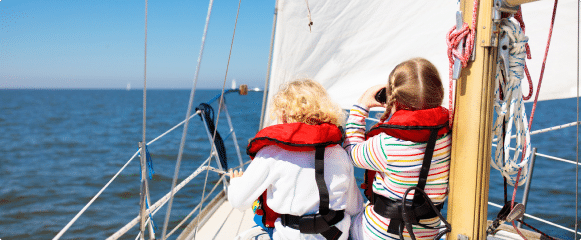
Bringing your kids along on your boating journeys can be great fun, but it requires careful planning and attention to safety. Keep these tips in mind before boating with children:
- Ensure swimming skills – Make sure that all kids on board know how to swim. If they aren’t strong swimmers, consider enrolling them in swimming lessons before your outing.
- Educate kids about boating safety – Before the trip, teach children about the basics of boating safety, including the proper use of life jackets and the importance of following the captain’s instructions.
- Establish boat rules – Set well-defined rules for behavior on the boat. Clear rules ensure that children know what’s expected of them for a safe journey.
- Share emergency protocol – Go over emergency procedures, including how to use communication devices, the location of safety equipment, and the steps to take in case of an emergency. Practice these procedures with the kids.
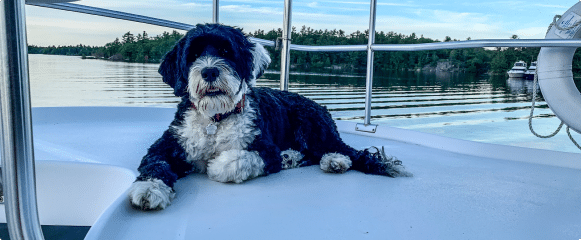
Boating with pets can also be a rewarding pastime, but it also requires special precautions. If you’re bringing a dog onboard, be sure to follow these tips:
- Use pet life jackets – Just like humans, pets should wear properly fitted life jackets. Make sure to choose a canine life jacket that’s appropriate for your pet’s size and weight.
- Secure pet-friendly areas – Identify and designate safe areas on the boat where your pet can move around without the risk of falling overboard.
- Bring a fresh water supply – Bring ample fresh water for your pet to stay hydrated. Don’t encourage your pet to drink water from the sea or lake.
- Consider the temperature – Be mindful of the heat. Dogs, in particular, can overheat quickly. Provide cooling options on hot, sunny days, and avoid exposing them to excessive temperatures.
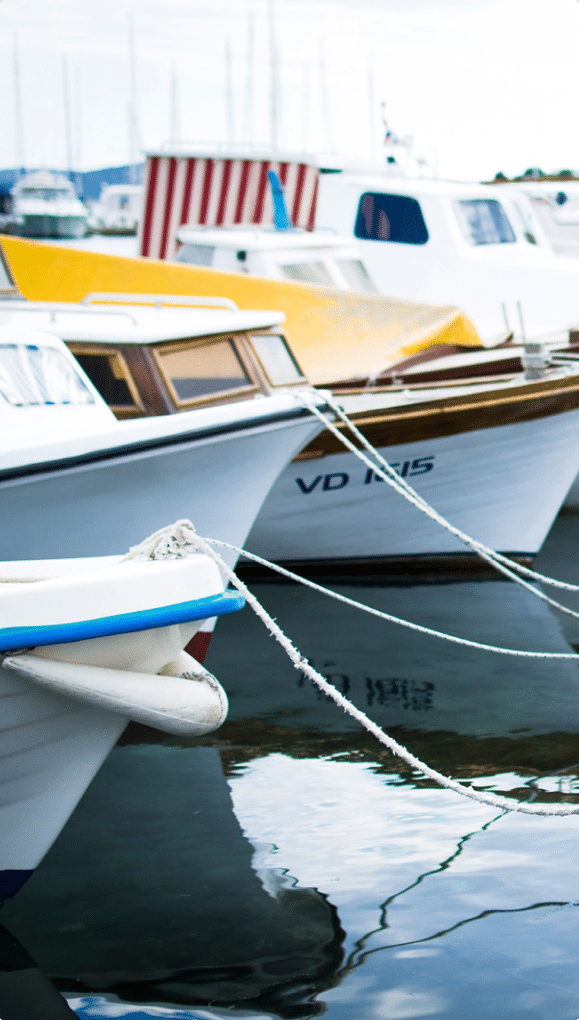
Boating Safety Courses
Many regions require individuals to obtain a boating license to operate a boat legally. This is especially common for motorized boats, but similar regulations may also apply to certain types of non-motorized vessels in some areas. Boat Ed and Boater Exam are two of the main sources of boating licenses and exams.
Whether or not you need a boating license, you should take a boating safety course if you plan to get behind the wheel of any type of boat. Various organizations offer boating safety courses, including the following:
- U.S. Coast Guard Auxiliary – The U.S. Coast Guard has a wide range of courses available, each addressing a different boating safety topic. You can find a public education class near you by entering your ZIP code.
- BoatU.S. – The BoatU.S. Foundation offers both free state-specific boating safety courses and more advanced paid courses that cover topics like GPS use and weather.
- National Safe Boating Council – This is a group made up of over 500 U.S. and international organizations. It offers on-water, online, and professional development course options.
- America’s Boating Club – This is a non-profit dedicated to boating safety that offers nationally recognized education for recreational boaters.
At Meirowitz & Wasserberg, our personal injury lawyers have helped clients who have suffered boating accident injuries fight for the compensation they deserve.


